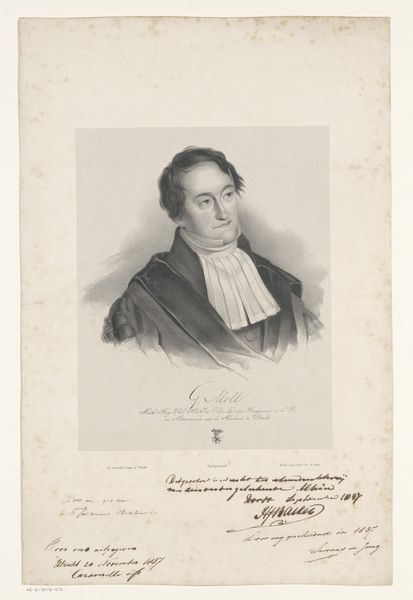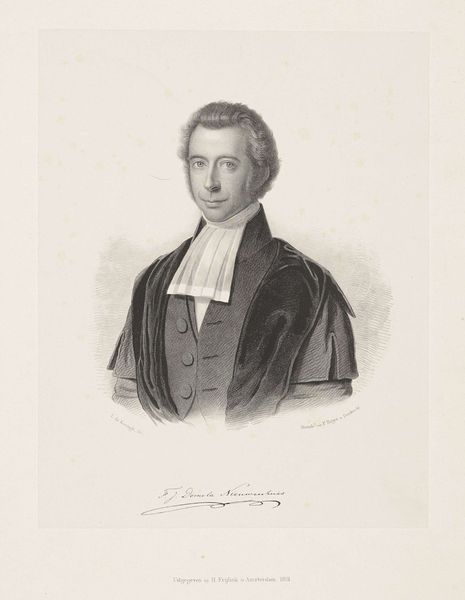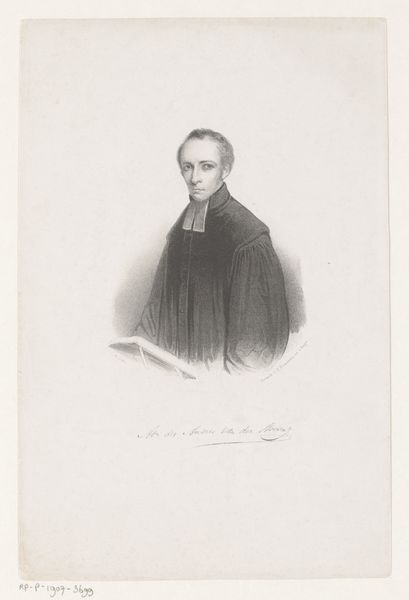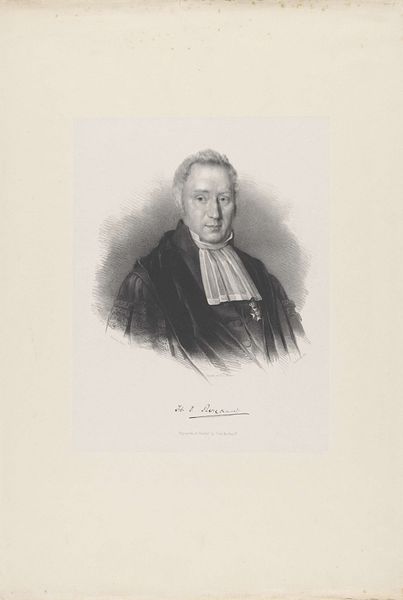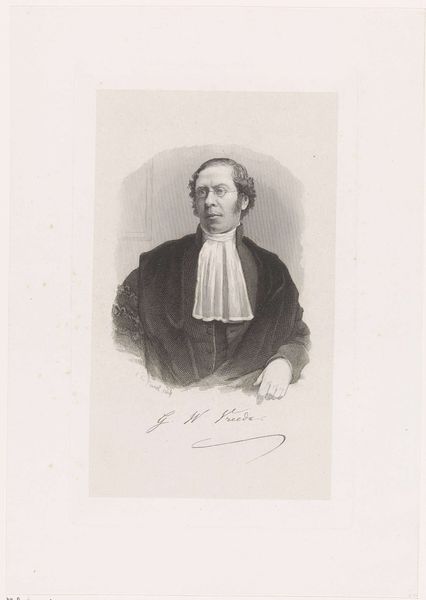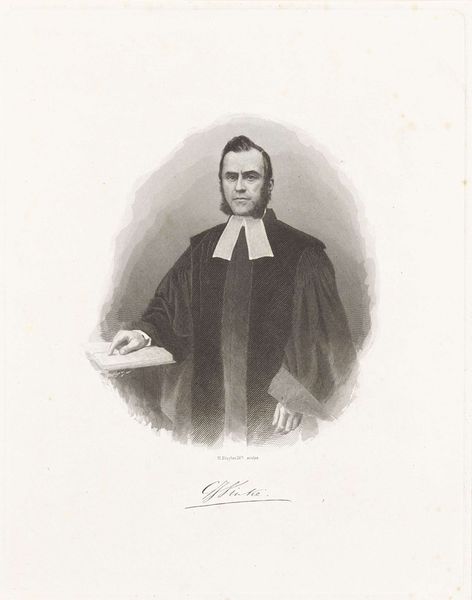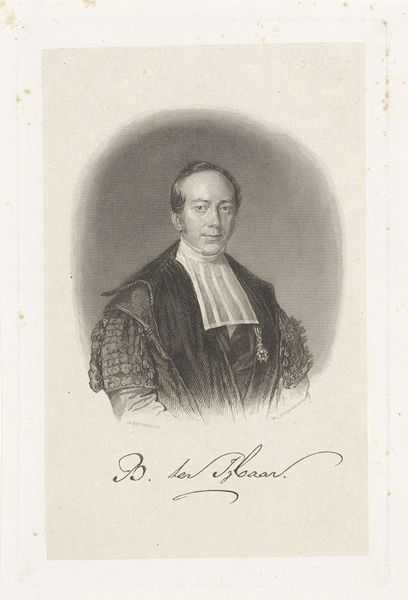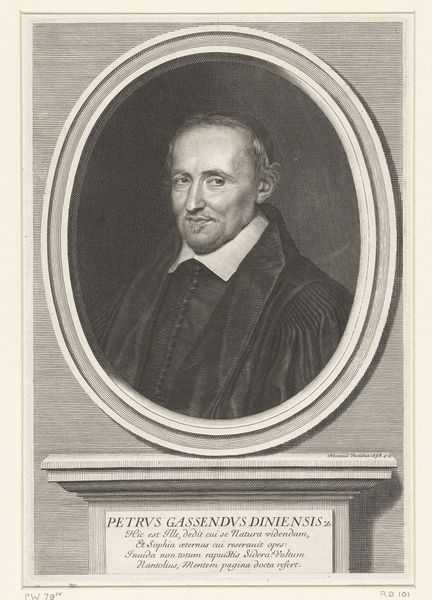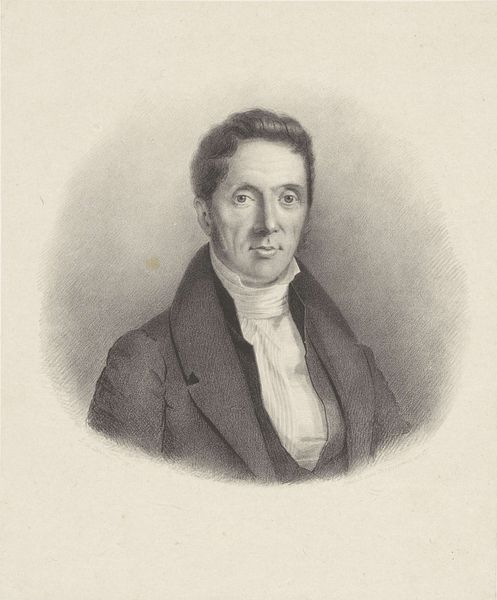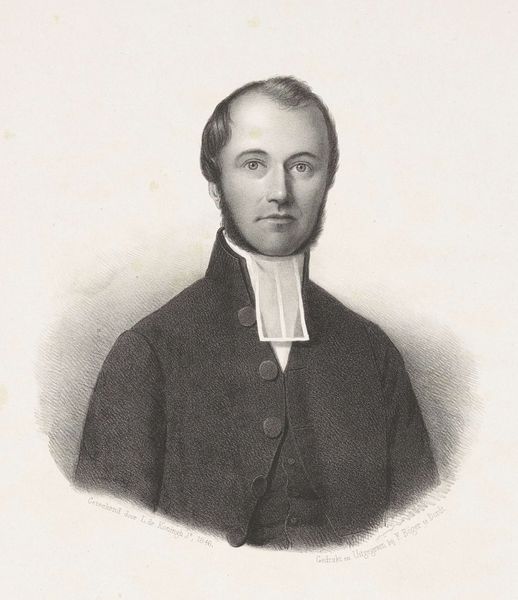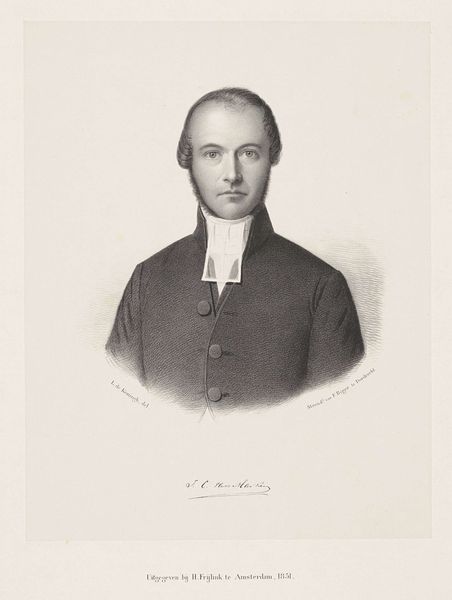
Dimensions: height 520 mm, width 380 mm
Copyright: Rijks Museum: Open Domain
Curator: Let's take a look at Leonard de Koningh's "Portret van W. Moll" created in 1851, employing graphite for a detailed and delicate drawing. What is your immediate impression of it? Editor: It feels so formal, almost severe. The graphite rendering gives it a very tight, controlled atmosphere, but there’s something about the eyes, a slight unease perhaps. It speaks of societal expectations and rigid structures. Curator: Yes, the portrait does embody the era’s formality. Consider how portraits were often commissioned to project a certain image of the sitter, perpetuating power and legacy. In the symbolic language of 19th-century portraiture, every detail held meaning. Editor: Absolutely. The subject’s attire – the cut of his coat, the high collar – speak volumes about his societal position. Is it too much of a leap to see the tight collar as representative of the restrictions placed on individuals within that society? The dark coloring further weighs down what seems to be the expression of someone in conflicted introspection. Curator: Not at all. Notice the stark contrast between the sharp, precise lines used for the face and the looser, almost romantic shading of the coat. De Koningh subtly juxtaposes order with emotion. And think of graphite itself. What does that medium invoke? Purity and exactitude. Editor: That’s fascinating, especially when juxtaposed against the context of the Romanticism movement. It highlights how Romanticism filtered through societal expectations, with some attempting to restrain, contain or control natural impulse or deep, felt expression. Curator: And yet, within that control, we glimpse vulnerability, which I believe gives it enduring psychological power. What’s preserved is not only a likeness, but an echo of personal existence, embedded in the cultural milieu. Editor: Precisely! Seeing this image not as a neutral depiction, but as a negotiation between individual experience and socio-historical forces truly changes the experience of it. It highlights the human story in an image of rigid adherence to duty. Curator: Well said, revealing the delicate interplay of artistic expression and social history. A moment of history and private existence interwoven. Editor: It's a wonderful thing to pause, reflect, and challenge any prior perceptions, particularly when examining works like these. It pushes one to consider questions about individual representation within social dynamics.
Comments
No comments
Be the first to comment and join the conversation on the ultimate creative platform.
